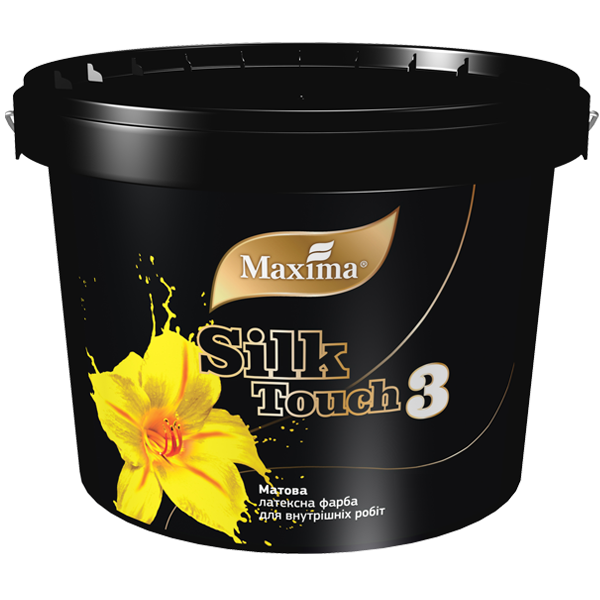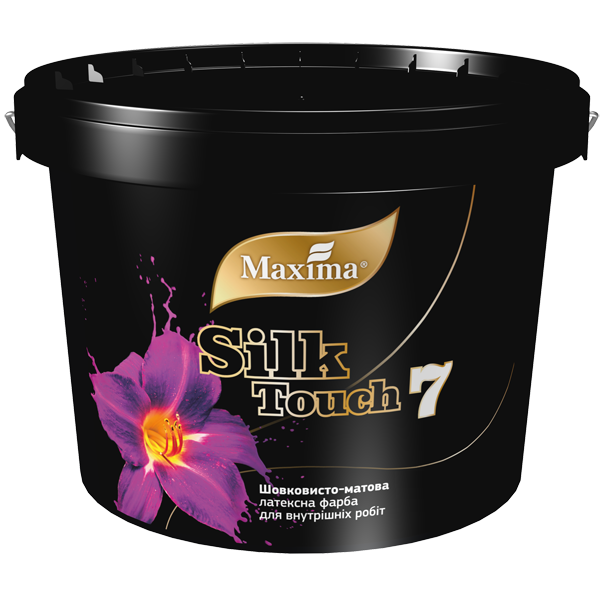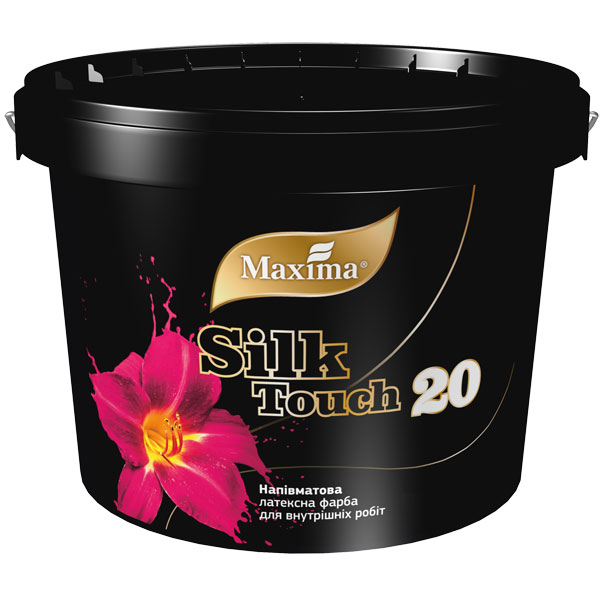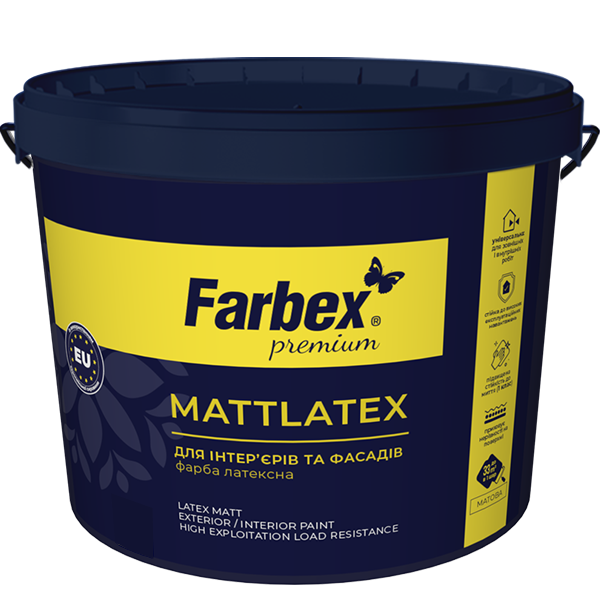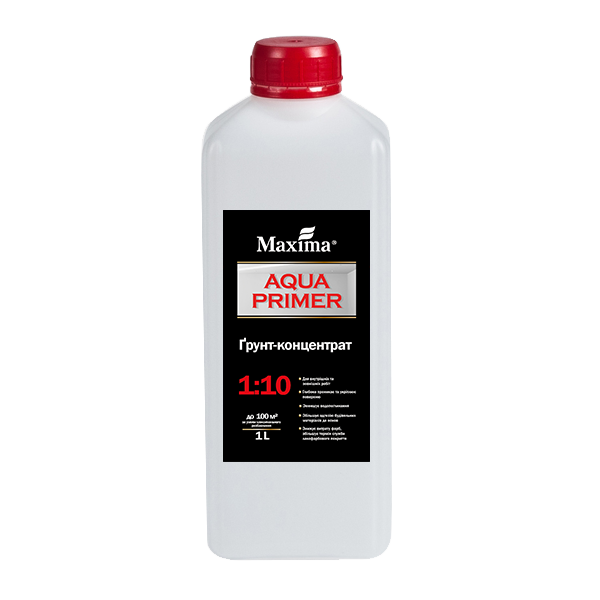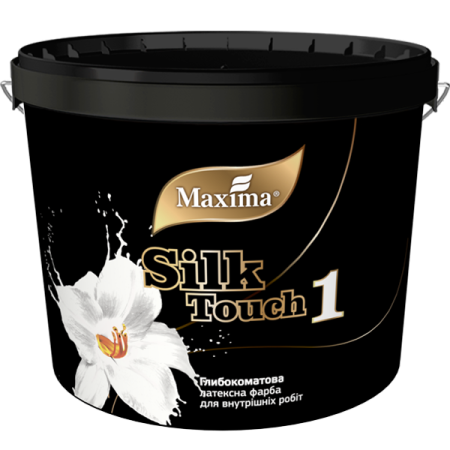
Maxima
Silk Touch 1
Dead-matt latex interior paint
Specification
It is a latex paint with a perfect dead-matt effect. It obtains a high level of adhesion and easily spreads on the surface, thus it provides a low consumption rate and high level of coverage. It creates a hard coating, which is resistant to intensive repeated washing (1 class acc. to DSTU EN 13300). It is vapor permeable. It hides effectively microcracks on the surface. It is easy to apply. It doesn't run and splash during the process of application. It is tinted manually with pigment concentrate "Farbex Color", other waterborne tinting pastes, or with a tinting machine according to the NCS color rate and others.
Sphere of application
It is intended for interior surfaces, which are mad of mineral (cement and lime-cement plaster, stucco, gypsum, brick and concrete), wooden surfaces, wallpapers and fiberglass. It can be applied on the walls or ceilings in premises with moderate and advanced humidity: rooms for children, living rooms and offices, bedrooms, halls, clubs, showrooms, industrial premices, etc. It is not intended for floors, doors and furniture.
Content:
High-quality latex, pigments, fillers, water, additives.
Tinting
-
Content
Technical data
| Consumption standard of 1 layer | 110-150 g/m2. Depending on the way of application and type of the surface. |
| Thinner | Water. Maximal dilution of 10 % of the total weight is allowed. |
| Application | Apply with a roller, a brush or a spraying gun. |
| Drying period (23 °С, 50% RH) | max. 1 hour. Drying period increases when the temperature is getting lower and relative air humidity is getting higher. |
| Solids content (DSTU ISO 3251) |
56±2 % |
| Density (DSTU ISO 2811-1) | ≈ 1,47 g/cm3 |
| Gloss (DSTU ISO 2813) | max. 5 GU at 85°, (dead matt, DSTU EN 13300) |
| The degree of milling (SSU ISO 1524) | max. 25 microns, (fine-grained, DSTU EN 13300) |
| Contrast ratio of dry film (ISO 6504-3) | > 98 % - 2 class (cons. 9.8 m2/l ≈ 150 g/m2) > 99.5 % - 1 class (cons. 4.6 m2/l ≈ 320 g/m2) Class of hiding power (acc. to DSTU EN 13300) |
| Wet-scrub resistance, microns (DSTU ISO 11998) |
max. 5 (after 200 cycles) |
| Wet-scrub resistance class (DSTU EN 13300) | 1 |
| VOC content (ISO 11890) | < 29 g/l. |
| Warranty period | 36 months, (at the temperature from +5 °С till +35 °С) |
| Packaging | 1,2 kg, 3,5 kg, 6 kg, 12 kg |
Gloss
Color
Application instruction
-
1. Surface preparation
Uncoated surface:
- Clean from dust, grease, and other dirt.
- Defected surfaces shall be removed with a Plaster for wood and mineral surfaces TM "Farbex". The dry surface shall be polished. After that remove abrasive dust.
- The surfaces in poor aired and wet premises shall be treated with antiseptic TM "Farbex".
- To make the surface hard, equalize absorbing ability, and improve adhesion of the surface it is recommended to treat the surface with a primer concentrate 1:10 TM "Maxima" or with a deep-penetrating primer TM "Farbex".
Previously coated surfaces:
- Clean the surface thoroughly from loose coatings, chalk and lime chalk coatings, and other dirt.
- Then treat the surface as an uncoated surface.
2. Priming
-
3. Applying
- Stir the paint thoroughly before application. If necessary dilute with water (maximum 10% of the total weight of the paint).
- Coating shall be performed at the temperature of air and the surface from + 10 °С to + 35 °С and relative air humidity less than 80%.
- Apply the paint in 1-2 coats with a roller or a spraying gun.
- Drying period of one coat of paint (23 °С; 50 % RH) is 1 hour maximum. Each subsequent coat shall be applied not before 4 hours.
- Application rate of one coat of paint is from 110 g/m² to 150 g/m² depending on the type of the surface and way of application.
- The surface achieves full washing ability in 3-4 weeks.
4. Tool cleaning
Wash the tools thoroughly with water. Do not let them dry.
You may also be interested in
Tips
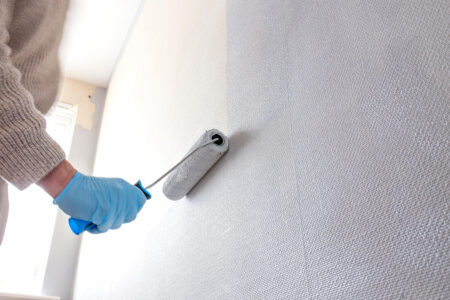
How to paint old wallpapers
If before painting the walls are thoroughly plastered and polished until you have an ideal surface, then you can easier and quicker prepare the walls for wallpapering. The texture of the wallpapers removes imperfections on the surface. Modern wallpapers are …
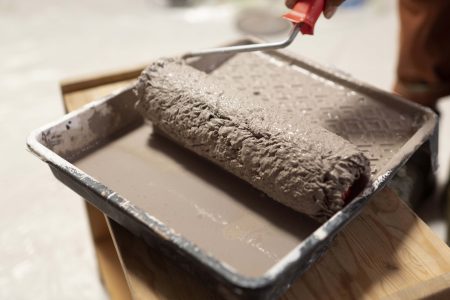
Як наносити латексну фарбу
Латексні фарби швидко завоювали популярність на ринку інтер’єрних фарб. А все тому, що вони зручні у нанесені і мають ряд унікальних властивостей. Як же наносити латексну фарбу, які для цього потрібні інструменти, та які головні переваги латексної фарби – читайте …
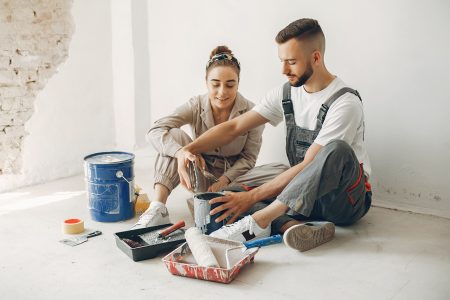
Як самостійно пофарбувати стіни?
Новий колір стін може кардинально змінити настрій кімнати і загальну атмосферу інтер’єру. В цій статті ви дізнаєтесь як пофарбувати стіни самостійно, щоб оновити загальний вигляд будь-якого приміщення. Підготовка стін Фарбувати шпалери можна лише ті, які мають позначку «під фарбування». У …

7 простих порад для ідеального фарбування стін
Оформлення стін – обов’язковий етап у дизайні кімнати. І не важливо, робити ви ремонт у новій квартирі чи вирішили просто оновити інтер’єр. Найшвидший спосіб перетворити кімнату – пофарбувати стіни. Ми підготували 7 кроків, які стануть для вас детальною інструкцією під …

How to coat a ceiling without problems?
The fact is that coating of a room with waterborne paints shall be started from the ceiling. There is certain sequence of work you should keep: At the beginning, we must prepare the surface:: 1. Cleaning It is necessary to …
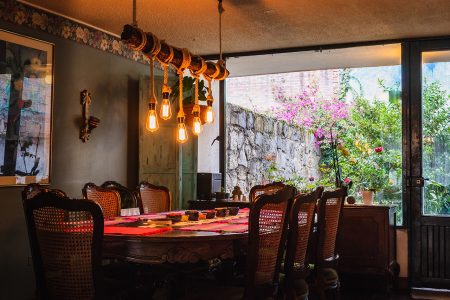
Кольорові стелі як особливість дизайну кімнати
За останні роки прослідковується як змінюється вибір кольору для стелі і стін, і взагалі стиль інтер’єрів. Вони стають більш аутентичні та практичні. Тренд на використання екологічних і натуральних матеріалів, дозволяє втілити комфортні, зрозумілі і функціональні дизайнерські рішення. Гармонія спостерігається і …
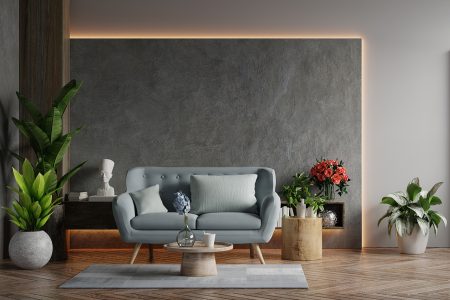
Тренди в інтер’єрі 2023 року
Розумне споживання, інноваційні технології, екологічність і комфорт – вже декілька років поспіль відображення цих тем є завданням номер один в усіх сферах життя. Тому тренди в дизайні інтер’єру 2023 року будуть відображати актуальні тенденції суспільства. Екологічність та натуральні матеріали Тренд …

Для чого необхідна латексна фарба: переваги та недоліки
Для ремонту в домівці часто використовують фарбу. І це не дивно, адже фарба найдоступніший та найлегший спосіб оновити інтер’єр. Зараз серед споживачів користується попитом латексна фарба. Як і кожен матеріал, латексна фарба має свої переваги та недоліки. У цій статті …
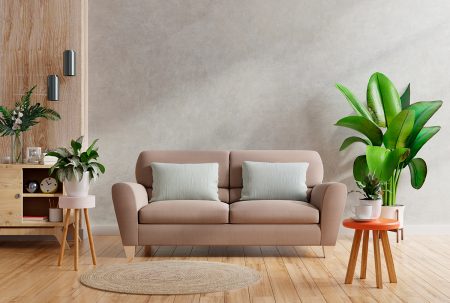
Актуальні тренди в інтер’єрі 2021 року
Приходячи додому, ми поринаємо в інтер’єр квартири. Хочеться, щоб він був комфортним, але при цьому оформлений стильно та зручно. Ми зробили добірку трьох популярних інтер’єрів на нашу думку в 2021 році. Мінімалізм Люди завжди прагнули до простоти, функціональності та легкості. …
Flow calculator
Consumption standard of 1 layer
When calculating the area to be painted, you need to subtract the area that will not be painted. (windows, doors, etc.)
Paint consumption may vary depending on dilution and uniformity of application of the paint.

